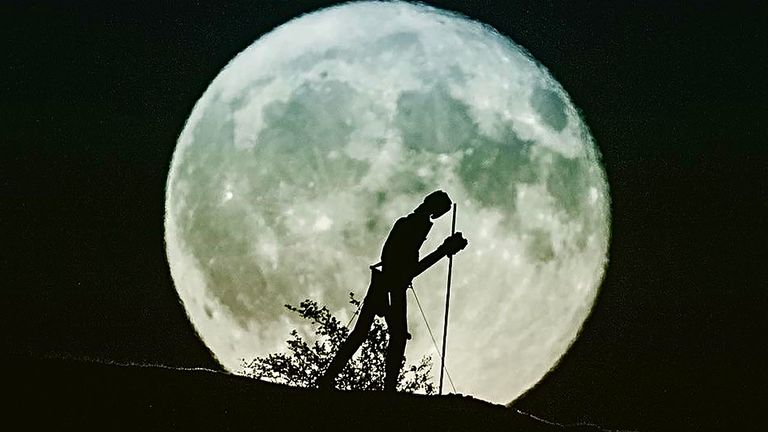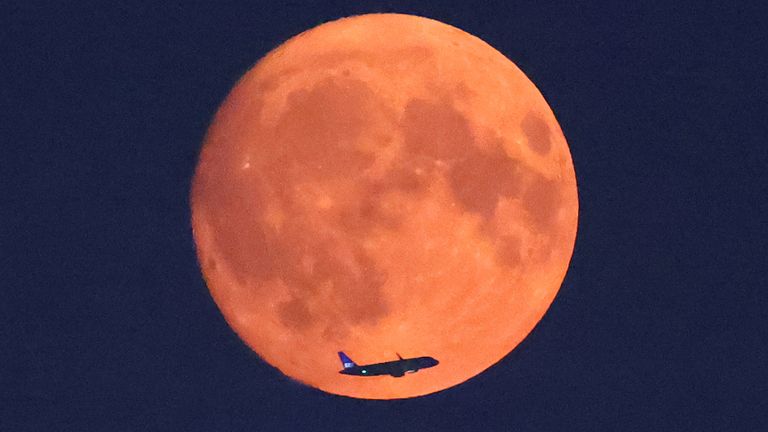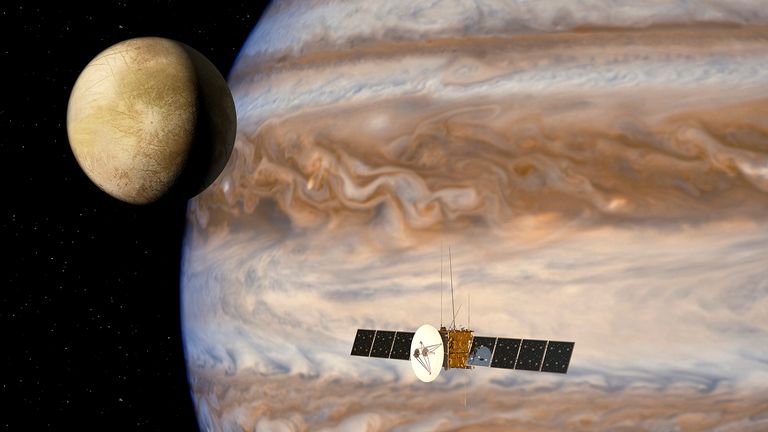A blue supermoon will appear on the horizon tonight, kicking off a series of astronomical events.
Supermoons occur when a full moon rises during its closest point in its orbit to Earth.
A blue moon happens when there are two full moons within a single calendar month or four full moons within a season.
They're fairly rare - hence the saying, "once in a blue moon" - and occur once every two to three years.

First of four supermoons
This is the first of four supermoons in the next four months, and it is coinciding with serious wildfires in the US.
The dust from these may give the moon a red glow; blue moons aren't actually blue.

The past two nights have seen spectacular moons around the UK, but they were just the warm-up. Tonight's moon is the official supermoon and if the skies clear, it could be impressive.
Top tips for photographing the night sky
Welsh astrophotographer Dafydd Wyn Morgan gives some top tips for people take pictures of night-sky spectaculars.
Tip one: Get to know your local area's darkest spots
"Seek out somewhere where you live which has minimal light pollution," says Mr Morgan.
Plan ahead as to where you're going to spend the night - make sure it is safe and you're allowed to be there, and let someone know where you're going.
Tip two: Give stargazing a go first
"Get to understand what you can see in the night sky. What are you looking at?" Mr Morgan says.
This will help you understand where to look in the sky, the speed at which things move and the kind of celestial events you're most interested in.
There are lots of stargazing apps you can use to understand what you're looking at - although make sure your screen brightness is down so you can still see in the dark!
If you're stargazing, Mr Morgan says to bring some nice, warm clothing and a blanket to lie on instead of craning your head back to look.
tip three: Try using your phone to snap some pictures
Although a fancy camera will give you more options, Mr Morgan says you can start with your phone and still get great results without having to spend lots of money.
"If you really get into it, you can decide then to invest some money on a good camera, a good lens, a good tripod, a remote control and a head torch as well," says Dafydd.
"And then all of a sudden, you've opened yourself into a new galaxy of experiences."
Read the full story: Top tips for amateur astrophotographers
The best time to spot a supermoon is during moonrise - the moon equivalent of sunrise.
Read more from Sky News:
Juice spacecraft to pass over Earth in 'world first' fly-by
Astronauts may be stuck in space until February
UK military spy satellite is launched
Start keeping an eye out from around 8.30pm - the further north you are, the later it will be, with John O'Groats' moonrise happening at around 9.10pm.
Keep up with all the latest news from the UK and around the world by following Sky News
Tap hereAfter this supermoon, the next will be on 18 September, followed by 17 October and then finishing with a final supermoon on 15 November.
While tonight's blue supermoon is rare, September's coincides with a partial lunar eclipse - another sight worth watching out for.
Disclaimer: The copyright of this article belongs to the original author. Reposting this article is solely for the purpose of information dissemination and does not constitute any investment advice. If there is any infringement, please contact us immediately. We will make corrections or deletions as necessary. Thank you.



